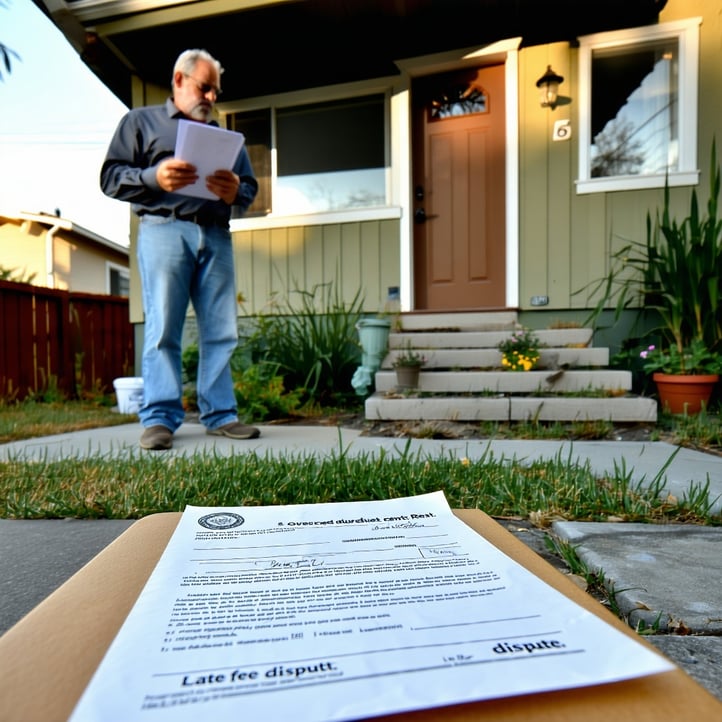If you own rental property in Carlsbad, Encinitas, Vista, Oceanside, San Marcos, or anywhere in North County San Diego, understanding California’s walk-through inspection law is essential. Many landlords miss this crucial step and it can lead to costly mistakes. Let’s break it down clearly so you avoid problems and stay compliant.
What is a Pre-Move-Out Inspection?
California law requires landlords to offer tenants a pre-move-out walk-through inspection. This law is designed to give tenants the chance to fix problems before they move out potentially avoiding deductions from their security deposit. While not every tenant will take advantage of this, you are required to offer it.
The inspection must be offered no earlier than two weeks before the lease ends or the tenant vacates. You must notify the tenant in writing of two things: first, that they have the right to request the inspection, and second, that they may be present during the inspection if they choose.
Why This Inspection Matters
We once worked with a landlord in Oceanside who didn’t offer the walk-through. The tenant moved out and left behind damage. The landlord deducted $850 from the security deposit for repairs. Unfortunately, the tenant filed a claim in small claims court and won. The judge ruled that since the landlord didn’t offer the walk-through, the tenant was denied a chance to fix the problems, making the deductions invalid.
This is not uncommon. Landlords who skip this step often face legal issues that are preventable. By doing it the right way, you protect yourself from court disputes and penalties.
Step-by-Step: How to Handle a Pre-Move-Out Inspection
Step 1: Notify the Tenant
As soon as you receive notice that the tenant will be moving out or if you give them notice you need to send a written notification offering a walk-through. This notice must include the tenant’s right to be present and language about abandoned property, which the law requires.
Step 2: Schedule the Inspection
If the tenant requests the inspection, work with them to schedule a mutually agreeable time. You must provide at least 48 hours’ written notice before entering the property. If the tenant cannot attend, or declines, you must still do the inspection and leave the inspection results in the unit.
Step 3: Conduct the Walk-Through
Inspect the unit and identify issues that could result in deductions from the security deposit. Focus on items beyond normal wear and tear such as holes in walls, stains, or unclean appliances. You’re looking for cleaning or repairs that fall outside the scope of what is considered normal usage.
Step 4: Provide an Itemized List
Immediately after the inspection, give the tenant a written itemized list of issues found. If they were present, hand it to them directly. If they were not, leave it inside the unit. This list must explain what would be deducted from the deposit if not corrected and cite relevant parts of the California Civil Code.
This step gives the tenant time to fix the problems on their own dime before move-out. For example, if you identify dirty grout or damaged blinds, they can clean or replace them instead of you deducting for it later.
Step 5: Wait for Move-Out and Reinspect
After the tenant moves out, you’ll do a final inspection. You must also take photographs starting in 2025 this is required by law. You’ll need three sets of photos: at move-in, at move-out before repairs, and after repairs are completed. This protects you in case of a dispute and is necessary to support any deductions.
What Can Be Deducted?
Under California law, you may deduct from the deposit for the following:
- Unpaid rent
- Cleaning beyond normal wear and tear
- Repairs for tenant-caused damage
- Replacement of missing items included in the lease
- Damage discovered after the walk-through due to the presence of furniture during the initial inspection
However, you cannot deduct for ordinary wear and tear. Things like minor scuffs on walls or faded carpet from use over time do not qualify.
If you deduct more than $125 for anything, you must include a receipt or invoice with the itemized disposition of the deposit. You may use estimates if the work hasn’t been done yet, but those estimates must be accurate and the work must actually be completed.
What if the Tenant Skips the Walk-Through?
If the tenant chooses not to request the inspection, or does not respond to your notice, you are not required to follow through. Just document your attempt and move forward with the standard final inspection after they vacate. You still need to provide an itemized deposit return and follow the same rules.
Penalties for Doing It Wrong
If you retain part or all of the security deposit in bad faith, the law allows the tenant to sue for up to twice the amount withheld. And even if the tenant doesn’t sue, failing to provide the inspection opportunity could lead to automatic losses in court if a dispute arises.
California law is very specific: you must follow the process exactly. Having clear communication, detailed records, and photo documentation is the only way to protect yourself.
How Raintree Helps Owners Avoid These Mistakes
At Raintree Property Management, we take care of the entire walk-through process for our clients. That includes:
- Notifying tenants of their rights
- Scheduling and conducting initial inspections
- Providing itemized findings
- Taking before-and-after photos
- Handling the deposit return on time with full documentation
Because we specialize in managing single-family homes and condos throughout North County San Diego including Carlsbad, Encinitas, Vista, Oceanside, and San Marcos we’re familiar with local issues and state regulations. That means our clients never have to worry about walk-through compliance or getting pulled into a security deposit dispute.
Final Thoughts
The pre-move-out inspection isn’t just a helpful tool it’s a legal requirement in California. Missing this step could cost you time, money, and credibility. Done right, it helps you keep good records, stay compliant, and avoid headaches.
If you want to protect your investment and make sure your property is managed according to the law, we can help.
Click the link here for a free rental analysis and see how we take the stress out of managing rental properties in North County San Diego.




